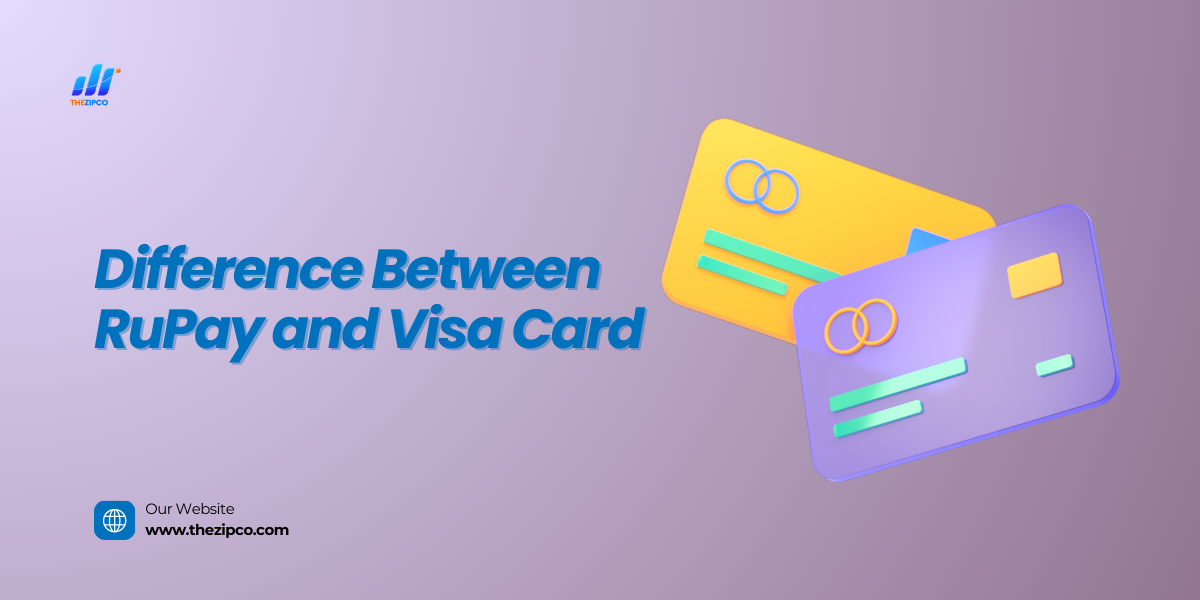Difference Between RuPay and Visa Card
As India emerges as a global economic powerhouse, its financial services sector is undergoing a major transformation, with cashless transactions becoming increasingly prevalent. Today, numerous transactions can be completed using cashless methods like cards. When selecting a new card, many people are often caught between choosing RuPay or Visa. This blog will explore RuPay and Visa card, highlighting their key differences and helping you decide which might be the better option. Keep reading for more insights.

What is a RuPay Card
- RuPay is an international financial service and payment system established by the National Payments Corporation of India Ltd (NPCIL).
- As India’s homegrown payment platform, launched by the RBI, RuPay was created to develop a domestic, open, multilateral payment system and advance financial inclusion.
- The name “RuPay” combines “Rupee” and “Pay.” Over time, RuPay has become one of the country’s most widely accepted payment networks.
- It offers a variety of debit, prepaid, and credit cards with low transaction costs, making it accessible to economically disadvantaged groups. Recently, RuPay partnered with Discover Financial Services (USA), Pulse, UnionPay (China), and JCB (Japan), enabling users to make transactions domestically and internationally across numerous merchant networks.
What is a Visa Card
- Visa is a multinational payment gateway and card solutions company based in the United States.
- As one of the most widely recognized card networks, Visa operates in over 200 countries and collaborates with more than 14,500 financial institutions globally.
- Visa provides an extensive array of debit, prepaid, and credit cards, including various co-branded credit card options
RuPay and Visa Card: Key Difference
Let’s examine the key differences between RuPay and Visa cards across the following parameters:
| Particulars |
RuPay |
Visa Card |
| Acceptance and Reach |
Widely accepted within India, but international payments are not supported. |
Accepted both domestically and internationally, allowing payments in almost any country worldwide. |
| Processing Fees |
Lower transaction fees as transactions are processed within India. |
Higher processing fees due to transactions being processed outside India. |
| Transaction Speed |
Faster transaction speeds compared to Visa and other payment networks. |
Slower transaction speeds compared to RuPay. |
| Target Customers |
Primarily targets underprivileged communities, especially in rural India. |
More commonly used in Tier 1 and Tier 2 cities in India. |
RuPay vs Visa: Which is Better
Determining whether “Visa vs RuPay is better” depends on your specific needs and the types of transactions you typically perform.
For Domestic Transactions: If you primarily conduct transactions within India, a RuPay card is an excellent choice. Its lower transaction fees and faster processing times make it ideal for everyday use.
For International Transactions: On the other hand, if you frequently engage in international transactions or travel abroad, a Visa card might be more suitable. Visa’s extensive acceptance and comprehensive global benefits provide convenience and enhanced security for overseas use.
Conclusion
In summary, both RuPay and Visa cards provide distinct advantages tailored to various customer needs.
By understanding the key differences between RuPay and Visa cards, you can make an informed decision that aligns with your lifestyle and preferences. Whichever option you select, be sure to review their fee structures, terms, and perks to fully optimize your card benefits.
Keep reading and supporting thezipco!


